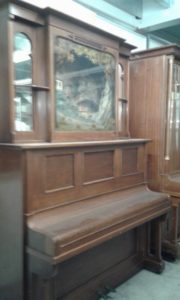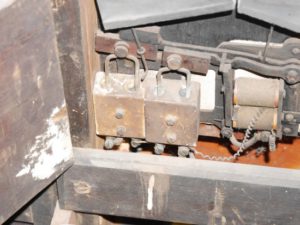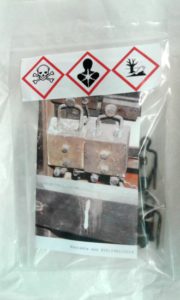By Paul Rowe
 Traditionally museum collections were made of physical items covering everything from beetles to books, and archives to artworks. Photography collections consisted of the analogue works – negatives or prints of the photographs. The items being added to museum collections are increasingly born-digital works such as photographs taken on a digital camera or films recorded on a smartphone.
Traditionally museum collections were made of physical items covering everything from beetles to books, and archives to artworks. Photography collections consisted of the analogue works – negatives or prints of the photographs. The items being added to museum collections are increasingly born-digital works such as photographs taken on a digital camera or films recorded on a smartphone.
We recently had a question on our users’ forum asking for advice on how to catalogue a smartphone app. How do born-digital works fit within the traditional museum cataloguing process? Where do you start with more complex acquisitions such as software package or app?
Here are some general tips about cataloguing born-digital objects, as well as some notes on multimedia material that you might only have in analogue form (such as reels of film).
Link the source digital files
When cataloguing any born-digital works you should link the digital files directly into the catalogue. These could include a high resolution original image and smaller images derivatives if they’re used by your system. For a smartphone app, you may be able to link to still images from the user interface or a trailer/help video about the app.
You may also be able to link to web addresses for the digital material, such as GitHub source code page or Wikipedia page describing a more complex digital item such as a smartphone app.
Many systems will be able to automatically import metadata from linked files so that you have detail including creation dates and capture equipment, dimensions and duration.
Use the standard object cataloguing fields
Many of the fields used to describe traditional collections will still apply to multimedia material, including born-digital files. Typical fields that you might use are:
Object Type: a simple description of the type of material. e.g. Sound Recording, Smartphone app.
Measurements: if you don’t have duration as metadata directly in the digital file then running time and digital file sizes could be noted in the catalogue record.
Size Category: analogue film stock is usually stored in standard can sizes. These could be created as standard size categories in your system.
Display Requirements: describe the equipment required to play the recording or to use the app.
Format: e.g. Digital Video Disc, 35mm colour film, iOS app
Sound: e.g. Dolby 5.1
Colour: Technicolor
Scale: e.g. 4:3 or 1200px x 900px.
Timecodes: You can note the start and end time within an audio or video file of key clips or episodes. Each start and end time should have title or description noting the subject of the clip.
Special Features: Note features available on a commercial film release or special attributes of a software package or app.
Technical Details: Note any important technical details such as DVD Zone or Video codec.
Carriers versus Titles
Large audio or video collections often include multiple copies of the same recording. Each copy is often referred to as a Carrier. An example would be film, which the organisation may hold as a 16mm master copy, and as an analogue VHS and digital DVD copy for lending.
For larger catalogues it can be worth splitting the catalogue detail into a title record and linking this to multiple related carrier records. The title record captures the intellectual description (the title, who made it, when and where was it made). The carrier records describe details of the copies (what format are they in, where are they stored, what loans and conservation work have they been involved in). This is a more complex structure and is only necessary when large numbers of duplicate copies are managed.
Vernon CMS
This article was as a result of a question specifically about using Vernon CMS to catalogue a smartphone app. Our tips should be applicable to many similar cataloguing systems. You can read more about the Vernon Collection Management System on www.vernonsystems.com.
Paul Rowe is CEO of Vernon Systems, an New Zealand-based collections management software company. Vernon Systems develops software to help organisations record, interpret and share their collections. Paul is particularly interested in the use of web-based systems within museums and increasing public access to museum collection information. He is occasionally seen caving.


